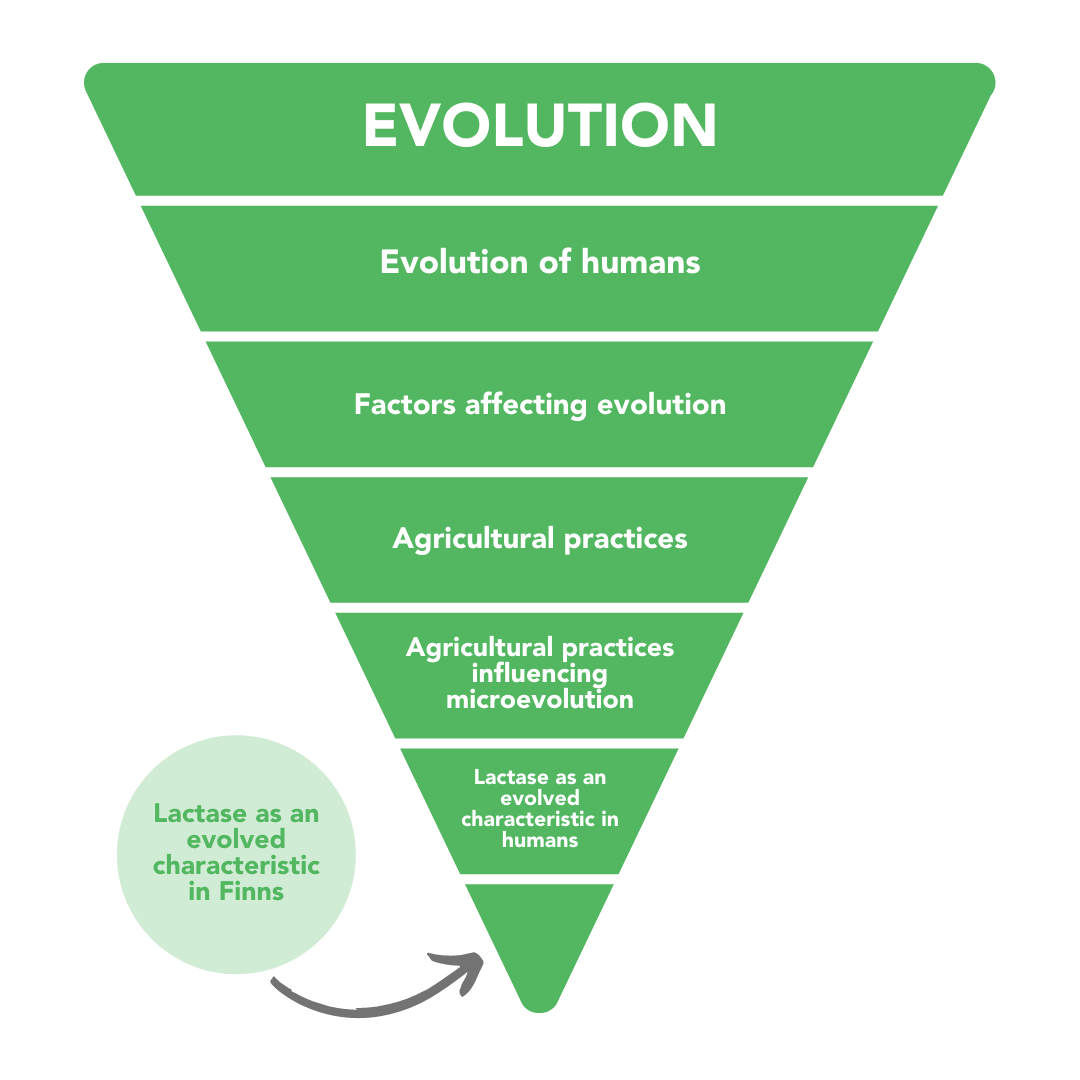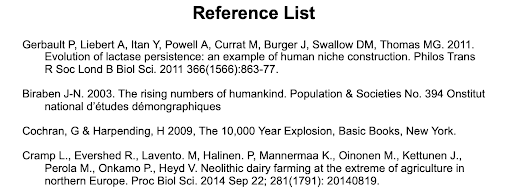Just been assigned to complete your Research Investigation for QCAA Biology IA3 but have no idea how to get started?
No stress! We’ve come up with a simple 4-step guide for you to follow so that you can get great marks on every section.
What are you waiting for? Let’s get to it!
What is a Research Investigation?
How do you write up a Research Investigation for Biology?
Step 1: Set Up the Report With an Introduction
Step 2: Analyse and Interpret the Data
Step 3: Conclude the Investigation
Step 4: Include a Reference List
What is a research investigation for QCAA Biology IA3?
A research investigation is simply a chance for you to showcase your ability to evaluate a claim in 1500 to 2000 words.
In the QCAA course, the IA3 Biology syllabus requires you to conduct research in order to gather, analyse, and interpret secondary evidence (obtained from scientifically credible sources). In order to do this, you may need to find information beyond your own knowledge.
How do you write up a research investigation for QCAA Biology IA3?
To successfully complete this task, QCAA states that you must:
- Identify the relevant scientific concepts associated with your claim
- Pose a research question addressing an aspect of the claim
- Conduct research to gather scientific evidence that may be used to address the research question and subsequently evaluate the claim
- Analyse data to identify sufficient and relevant evidence — identifying trends, patterns, relationships, and limitations
- Interpret the evidence to construct justified scientific arguments and to form a justified conclusion to the research question
- Discuss the quality of the evidence
- Evaluate the claim by extrapolating the findings of the research question to the claim
- Suggest improvements and extensions to the investigation
These are 4 steps that you can follow to complete this assignment:
Below is a breakdown for how, exactly, to complete a research investigation and hit all the marks along the way.
Step 1: Set Up the IA3 Report With an Introduction
Rationale
It is important that you show the development of your investigation through the rationale. You can’t simply jump straight to the crux of the investigation, as that doesn’t give any indication as to why you are doing the investigation and any important information that has informed your question.
You need to show the development of your research question from the claim you are investigating. For this reason, it can be helpful to think of your rationale as a funnel through which you are feeding the reader information.
For example, let’s look at the rationale mapping for an investigation into the link between lactose intolerance and the domestication of dairy cattle.
It’s also important to make sure that your rationale addresses every component of your research question. The purpose of your rationale is, after all, to show how the question has been developed.
For this assignment, in order to get top marks, your rationale should be “considered” — but what does this mean?
Your rationale must discuss any theory that is important for the investigation (you must also make sure you are referring to credible sources — this will ensure you meet the “sufficient and relevant sources” criteria”).
You are also required to show that your modifications to the methodology have been informed by theory. Using the funnel method shown above can help you produce a considered rationale.
From QCAA Biology IA3 exemplar: The Homo sapien population has grown from an estimated 5 million people in the pre-Neolithic era to an estimated 7.4 billion in 2016 (Biraben, 2003) (Population Reference Bureau, 2016). The exponential growth observed in the last 50 000 years can be linked to a variety of cultural factors that have enabled a greater proportion of humans to reach reproductive age and live longer lives (Cochran and Harpending, 2009). Consequently, in this larger population, higher levels of gene flow and variation occur between individuals (microevolution) and the likelihood of macro evolutionary change is increased. This can be attributed to an increased range of favourable, advantageous genetic combinations arising in a population whilst smaller populations may be more likely to experience a high degree of genetic drift. However, large-scale scans using patterns of linkage disequilibrium to detect recent selection (i.e. in the last 10, 000 years) suggest that many genes may have evolved in response to agriculture (Richerson et al., 2010).
Developing a Research Question
When developing your research question, the goal is to come up with a question that is concise but specific enough to provide results that can be analysed with ease. You want to ensure that both your dependent and independent variables are not only included in the question, but operationalised (if possible).
To improve your question, you should look into using an open-ended question. Rather than asking, “Does X impact Y?”, ask “How does X impact Y?”.
By only asking “Does”, you are asking a yes or no question. The inclusion of “How” allows for a more in depth investigation of the relationship between the variables.
As the goal of the rationale is to show the development of your research question, it is recommended that you include a broad research question which is then followed by a specific research question after you have conducted some research.
Your broad research question may not be directional (it asks “Does” rather than “How does”) and it may lack specificity with regard to the variables being studied.
To get top marks, your research question needs to be “specific” and “relevant” — but what is meant by this?
You have to really consider the variables you are exploring and ensure that your question is linked well to your rationale. Every aspect of your IA3 research question should be addressed in the rationale.
From QCAA Biology IA3 exemplar:
Broad research question: ‘Does cultural practice drive human evolution?’
Specific research question: ‘Is the prevalence of hypolactasia (lactose intolerance) in Finland linked to the practice of domesticating cattle for dairy purposes?’
Background
Your background section will be smaller than your rationale. Your rationale shows how you have developed your research question and shows how you have further developed your understanding of the content by investigating some of the concepts explored in the specific research question.
More simply, your rationale will investigate the very broad topics, whereas the background will explore the finer details and more specific components of the investigation.
From QCAA Biology IA3 exemplar: Lactose is the main carbohydrate found in milk. Typically, human infants can readily digest milk in order to grow and develop due to the presence of the enzyme lactase in their intestine. The production of this enzyme typically declines in adulthood removing a significant source of available dietary carbohydrate. Some humans continue to express lactase throughout adult life, and are thus able to digest the lactose found in fresh milk. This trait is called lactase persistence (LP) and the frequency of this phenotype is found in around 35 per cent of adults living in the world today (Gerbault, 2011).
In this section, the criteria being assessed is as follows:
Refer to the “To get top marks” component of each section to see how you can ensure you meet all of the criteria.
Step 2: Analyse and Interpret the Data
Evidence for the Research Investigation
In this part of the QCAA Biology IA3, you need to draw upon any qualitative and/or quantitative data found during your research to generate a direct response to the research question. Rather than making explicit inferences, however, you should focus primarily on identifying trends, patterns, and relationships in the data.
You should be able to show, through the evidence you provide, the development of your arguments and position concerning the research question. In this section you can present any graphs or tables containing data.
To get top marks, you must comment on any “trends, patterns, or relationships” observed within the evidence.
The resources must be “relevant” and this can be achieved by ensuring your data is valid — that is, ensuring it can actually be used to draw conclusions that will guide you towards an answer. It is important that you explicitly link your data/observations to the research question/claim.
From QCAA Biology IA3 exemplar: In terms of the practice of ancient dairying, current evidence suggests domestication of livestock in Finland and large-scale animal husbandry was occurring during the Bronze Age (3500-2500 years ago) (Præbel, 2016). To further support this, analysis of core ware pottery may have ‘revealed Neolithic settlers in Finland may have been consuming dairy foods as early as 2500 BC (Cramp et al., 2014)’. However, data from Hansen et al. (2015), states that the prevalence of lactose intolerance in Finnish-speaking Finns has been documented at 17% whilst in the Finnish Sami population the prevalence ranges from 25 to 60%. This is a noticeable variance which could be explained by the access to cow’s milk between the different populations.
Evaluation of Research
In this section, you will comment on any limitations of the evidence that have potentially impacted your ability to accurately answer the research question or draw a conclusion.
You must also comment on how, exactly, it impacts your ability to come to a conclusion. Examples of limitations include Type I and II errors.
Within your Evaluation, you must also suggest any improvements or extensions you would make to the investigation.
Lastly, you must talk about what your results mean with regard to answering the research question. You are required to draw justified conclusions that link to the research question.
To get top marks, you must show the “thorough and appropriate identification of limitation”, and insightfully discuss the “quality of evidence”. This can be achieved by identifying the shortcomings of the investigation and how they impact your ability to draw a conclusion.
You’ll also need to identify “trends, patterns or relationships” in the data, and discuss how this behaviour of the data can be used to draw a “justified” conclusion. To do this, you must ensure that all of your observations and arguments link directly to the question.
From QCAA Biology IA3 exemplar: This data also doesn’t take into account that the change in alleles between populations isn’t just because of strong genetic drift. Without further research to support how the Finns and Sami differ it is difficult to comment on this. Therefore, this would be a plausible area of further research to find out more on.
In this section, the criteria being assessed is as follows:
Refer to the “To get top marks” component of each subsection to see how you can ensure you meet all of the criteria.
Step 3: Conclude the Investigation
In this section of your Biology research investigation, you simply summarise the results and your answer to the research question.
From QCAA Biology IA3 exemplar: In conclusion, the claim that human evolution is still occurring is not fully supported. Because the question is broad it requires more experimentation than is possible. If the specific research question is considered this also cannot be fully supported. This is because the evidence supplied for the research question is about historical data. A longitudinal study could be done to track the Finn and Sami populations over time. Also, further research could be done to see if there are more unknown alleles in the population.
Step 4: Include a Reference List
Since this assessment is research based, you will need to list the various sources you’ve used in order to complete the task.
From QCAA Biology IA3 exemplar:
Note: This exemplar uses APA style referencing.
There you have it!
You’ve now got a simple structure you can follow in order to complete your IA3 Biology research investigation. We hope this has given you more confidence to attempt the task and do well!
Don’t just wonder how you’re doing – know it! With our FREE QCE Cohort Comparison Tool you can see exactly where you sit compared to your peers and see your predicted ATAR result!
If you’re on the hunt for other resources to help you study or prepare for QCAA Biology assessments, here are some you can look at:
- Unit 3 Biology Data Test IA1 Practice Questions
- Unit 3 & 4 Biology External Assessment Practice Questions
- Unit 3 & 4 Biology External Assessment Multiple Choice Practice Questions
- How to Write a Student Experiment Report for Biology
- The Essential List of QCE Biology Terms You Need to Know for Unit 3
Are you looking for some extra help with the IA3 Research Investigation for QCAA Biology?
We have an incredible team of QLD Biology tutors and mentors!
We can help you master the QCAA Biology syllabus and ace your upcoming Biology assessments with personalised lessons conducted one-on-one in your home or online!
Looking for more Term 3 relevant content? Check out our complete Term 3 Resource Guide!
We’ve supported over 8,000 students over the last 11 years, and on average our students score mark improvements of over 20%!
To find out more and get started with an inspirational QCE tutor and mentor, get in touch today or give us a ring on 1300 267 888!
Katelyn Smith was a pioneer in the Queensland ATAR system. After graduating in 2020 with an ATAR of 98.40, she now studies a Bachelor of Advanced Science (Honours) at The University of Queensland — majoring in Physics. Through her studies, she hopes to develop a greater appreciation for how the wonders of the universe work. When she isn’t slaving away behind her unnecessarily large textbooks, she enjoys catching up with friends, scrolling mindlessly through TikTok, and sleeping.









